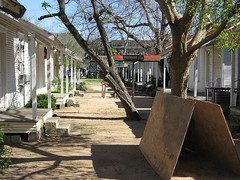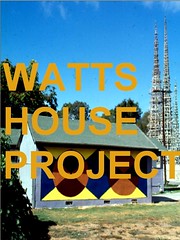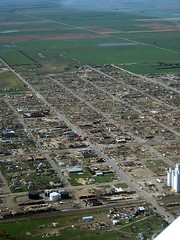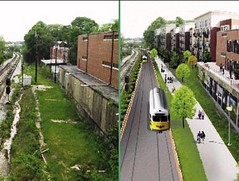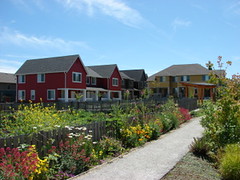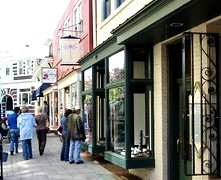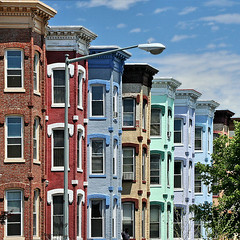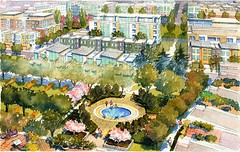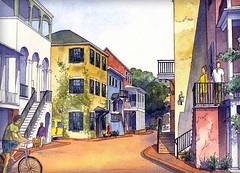These are a few of my favorite . . . places!

Posted December 22, 2008 at 2:10PM
Herewith, readers, some of my very favorite smart, livable places that are contributing positively to the environment, as I've written about them over the past year.
When NRDC's Ian Wilker first approached me about blogging, I'm sure that neither he nor I anticipated that it would lead to so much writing on my part. But there are so many stories out there that I want to tell, so many good people whose work deserves to be known. My favorites are the neighborhood success stories, the ones where I'm privileged to observe something and, say, "look - THIS is what it can be like, if we follow these great examples."
We environmentalists, as a breed, are still way too negative, in my opinion. I fully understand why, but if more of us don't take the next step and present the positive alternative, we won't make the progress we need to make. It's been an honor to tell you about some of these great places, and here is my top 10 (eleven!) from this space in 2008:
Old North Saint Louis. "Every now and then I run across a story that is so good, that feels so right, that I thank my lucky stars for the freedom NRDC gave me to evolve my career into working for better, more sustainable communities. This is such a story, and it reveals an historic, diverse, inclusive neighborhood that is reclaiming its identity, restoring its infrastructure, empowering its residents, and securing its future . . ."
Project Row Houses (Houston) and Watts House Project (Los Angeles). A two-parter: "A heretofore unique success story of how art has catalyzed community development and identity is about to be unique no more, and that is a wonderful thing. But first let me tell you, in words and pictures, about the amazing Project Row Houses in Houston . . ."
Greensburg, Kansas. "No example is more inspiring, or more quintessentially American, than that of Greensburg, Kansas. After complete devastation, Greensburg is now positioning itself to become the most sustainable community in America . . ." (Part two of the story is here.)
The Atlanta Beltline. "My heart has been stolen once again. The Atlanta Beltline, an ambitious 22-mile proposed loop around the city's downtown, will incorporate state-of-the-art transit, new parks and trails, workforce housing, and lots of smart, green neighborhood development, all taking place in the city rather than sprawling out on the fringe . . ." (There's also a brief follow-up here.)
Seattle's High Point. "HOPE VI is by far my favorite government housing assistance program. Few in my world know how it got its name (Housing Opportunity for People Everywhere, Title VI - thanks, Payton), but we all know its mission of replacing stigmatized, outmoded public housing ghettoes with walkable, mixed-income neighborhoods, most of them based on the principles of new urbanism. One of the best I've run across is Seattle's High Point . . ."
Asheville, my original home town. "I have to say that it is more than a little disorienting to have the sleepy Bible Belt town that I grew up in, and couldn't wait to exit from, go all trendy on me. But there's no doubt. Asheville has become a sort of Santa Fe East, and I'm here to report that it's more good than bad. Great music bars, better vegetarian restaurants than we have here in DC, galleries galore filled with really good stuff. Even an interesting, walkable downtown . . ." (This was another two-parter, and Part Two is here.)
The real Washington, D.C., my home town for the last 39 (!) years. "Official "Washington" has very little to do with the city that I live in . . . The architecture of my city is not about white marble but red brick, mostly, either in the natural color or painted. It's typically 3-5 stories high . . ."
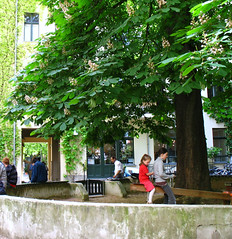
Berlin's Hackesche Hofe. "Is it urbanist, or just urban? Or just exceptionally pleasant? East Berlin's Hackesche Hofe represents many of the things we want our city neighborhoods to be - architecturally impressive yet low-key; a place for living, shopping, playing, and visiting; highly walkable and transit-accessible . . ."
Station Park Green, San Mateo. "A stunning plan for transit-oriented development in San Mateo, California, south of San Francisco, has earned "gold" certification under the LEED for Neighborhood Development program founded by NRDC, the Congress for the New Urbanism, and the US Green Building Council . . ."
Arlington, Virginia. "With amazing foresight and gifted planning, Arlington has transformed itself in about three decades from a declining inner-ring suburb into a thriving, bustling and immensely livable community. This was done by coordinating the county's (under Virginia law, Arlington is a county, not a city) redevelopment and growth with the region's Metro subway system . . ." (In two parts. Go here for Part Two).
Mixson, in North Charleston, SC. "One of the best redevelopment projects in the Neck is Mixson, which is putting over 900 homes and 150,000 square feet of shops, offices, and amenities on a 44-acre tract in North Charleston. That effectively displaces what would likely be the development of around 300 acres of countryside if it had been built on the fringe to typical sprawl dimensions . . ."
Every one of these places has been blessed with a bit of genius and a lot of skill and determination. Their inhabitants and neighbors are the better for it, and so is the planet.

